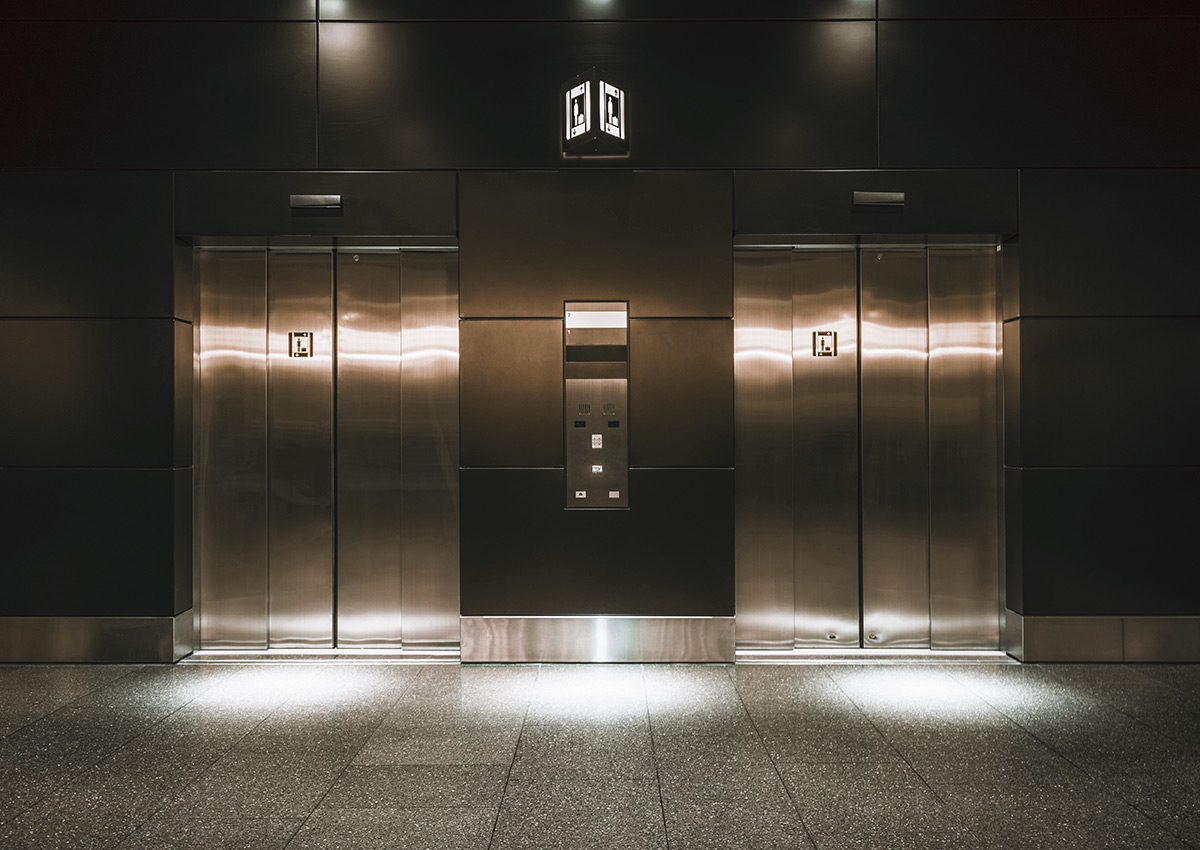There are all different types of elevators for different types of buildings. Elevators carry people and anything else that needs to be taken to the different levels of a building, within a certain weight capacity, of course. Back in the 1850’s structural frames begin being built with a taller structure to them and elevators became a common thing. The thing that actually made elevators popular was the safety mechanism of Elisha Otis’s. Nearly all of the more modern buildings consisting of more than one floor are required to have access from floor to floor by means of more than just stairs.
The main three kinds of elevators that are most used are:
With each of the above types having different variations.
Gearless Traction & Geared Elevators W/ Machine Room
Gearless traction and Geared Elevators use ropes to lift them, the ropes pass over a wheel, the wheel is attached to the electric motor which is located on top of the elevator shaft. These are use for the mid and the high-rise elevators and have a faster travel time than the hydraulic ones. These elevators use a counter weight making them run more efficient because it offsets the weight of the car elevator, including the weight of the passengers, taking the extra work off of the elevator. Elevators with a geared traction use a gearbox which is attached to its motor. The gearbox is what drives the wheel and moves the ropes. Elevators with geared traction have the ability to go speeds of up to 500 feet per minute. However, the maximum distance of travel for an elevator with a geared traction is only around 250 feet.
Elevators with gear-less traction also have a wheel, it is attached to the motor directly. Elevators with gear-less traction can go speeds of up to 2,000 feet per minute, having a maximum distance of travel about 2,000 feet, making them the only ones used for high rise buildings. Elevators with gear-less traction are a little high on the initial cost, maintenance cost stay at a steady medium, and are more efficient than are the elevators with geared traction. Checking a traction elevator’s ropes and sheaves for wear and tear at regular intervals is important. As these wear their traction in between the sheave and the cables get reduced, causing slippage, and they will continue to slip more and more, reducing the elevators efficiency and making it a dangerous situation.
Elevators with traction have restrictions on height, as these are governed by the elevators length and weight the cables/ropes have. There are new materials that can be used for traction elevators making them stronger and yet, lighter, the material is a carbon fiber which allows elevators with traction to reach even newer heights.
No Machine Room Elevators (MRL):
No Machine room elevators (MRL) is another way to say traction elevators, which do not have a machine room located over the elevators shaft. Instead, it is located in the over-ride space. When it needs repairs to be done it has to be accessed through the cab of the elevator (a place found at the top of the elevator). The control boxes can be found in the control room, this is located at the highest landing (about 150 feet from the machine, across from the elevators shaft.
With a maximum travel distance as high as 250 feet, machine room less elevators have speeds in the excess of 500 feet a minute. The MRL and geared traction elevators, both have about the same initial start-up costs, as well as their maintenance costs, Yet, the MRL elevators have a much lower consumption of energy than the geared elevators. Both, the MRL and the gear less traction elevators are nearly equal in being energy efficient, both are reliable, and they both take up less space. But, the MRL elevators are the best choice and more popular for mid-rise buildings with travel distance as high as 250 feet.
One of the main reasons that the United States has been slow about adopting the MRL elevators is due to the building codes having provisions about the motor being located in the elevators hoist-way. However, these codes have been being gradually changed. Yet, it would be in your best interest to consult with your local authorities regarding a specific MRL elevator.
Hydraulic Elevators:
Hydraulic elevators have a piston that is located at the elevator’s base to support it. The piston shoves the elevator upward while the motor moves a fluid (usually an oil, but it could be a different type of hydraulic fluid) into the piston. As the elevator is descending a fluid is released through a value in the piston. These types of elevators are use in buildings that have 2 to 8 floors, traveling at speeds up to 200 ft. per minute.
On the lowest level, across from the elevator is where the hydraulic elevator machine room is located. The conventional type of hydraulic elevators has an sheave which extends under the elevator’s floor to the elevator pit, and as the elevator is descending, the sheave accepts as the pistons are retracting. Several of the configurations has a telescoping piston which will collapses, requiring a shallower hole under the pit.
The maximum travel distance is around 60 ft. Hydraulic elevator’s that are hole-less may have the piston on either side of the elevator’s cab. For this configuration the telescoping pistons have been fixed in the base of the pit, so it does not need a sheave, nor a hole under the pit. Having a telescoping pistons will let an elevator travel at a distance of 50 ft., whereas, a non-telescoping piston only a travel distance of up to 20 ft. There is a combination of different ropes used with Roped Hydraulic Elevator’s, with a piston that moves the elevator. Having a maximum travel distance around 60 ft.
The initial cost for hydraulic elevator’s will be lower, as well as the maintenance costs in the future when compared to the cost of other elevator’s. On the other hand, hydraulic elevator’s will use more energy than other elevator’s, the reason is that it’s electric motor is working against gravity while it is forcing the hydraulic fluids into the pistons. There is however, a significant drawback in the hydraulic elevator’s, which is that it’s hydraulic fluid may sometimes leak and this can create a serious environmental hazard. The two key reasons that hydraulic elevators have not been as popular recently as they have been in the past due to the environmental risks involved and their high usage of energy.
Thank you for enjoying “Different Types OF Elevators“, stay tuned for more from the Elevator experts at Arizona Elevator Solutions.

